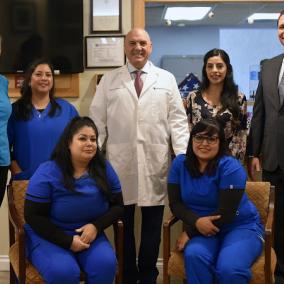What is trachoma?
Trachoma is a bacterial infection that affects the eyes and is the leading cause of infectious blindness globally. First described by the Egyptian Ebers papyrus around 1550 BCE, this disease is often associated with poor hygiene, inadequate water supply, and crowded living conditions.
Caused by the Chlamydia trachomatis bacterium, trachoma manifests in two distinct stages. The primary stage, also known as the active stage, primarily affects children, particularly those living in endemic regions with restricted access to clean water and sanitation facilities. The secondary or scarring stage affects adults, often between 30 to 40 years of age, translating into irreversible blindness if left untreated strategically.
Symptoms of trachoma
The symptoms of trachoma can vary in severity depending on the stage of the disease, environmental aspects, and the overall health of the individual. In the initial stages of the disease, patients may experience irritation or itching in the eye, accompanied by mild pain and redness. As the infection progresses, prominent signs may include photophobia (light sensitivity), eye discharge, swelling of eyelids, trichiasis (inward folding of eyelashes), and blurred vision. In the case of repeated untreated infections, corneal scarring may occur, paving the path for irreversible blindness.
Causes of trachoma
The cause of trachoma is purely microbial, but its transmission is predominantly human to human through direct contact with eye, nose, and throat secretions of affected individuals or through indirect contact via clothing, towels, or even flies that have come in contact with these secretions. Children, as primary reservoirs of infection, play a critical role, along with women (due to closer contact with children), in the transmission cycle of this disease.
In terms of treatment, trachoma is treatable and even preventable. In the early stages, antibiotics like Azithromycin or topical Tetracycline can be effective in eradicating the infection. However, in advanced stages, where scarring or trichiasis has occurred, surgical intervention might be necessary. The WHO endorses a multi-faceted approach known as SAFE, defined as Surgery for trichiasis, Antibiotics for active infection, Facial cleanliness to reduce transmission, and Environmental improvement, especially in access to water and sanitation to reduce the breeding sites for flies.
It is essential to understand that the treatment of trachoma is not just clinical but also social, emphasizing the importance of clean water, proper sanitation, and personal hygiene. Public health initiatives aimed at improving living conditions and access to healthcare services in endemic regions can play a decisive role in controlling and eradicating this disease.
In conclusion, the battle against trachoma is intricate, necessitating comprehensive participation from healthcare providers, policymakers, and the affected communities. With a combined approach of simple surgical procedures, antibiotic treatment, face-washing, and environmental hygiene improvements, we can make significant strides toward the global elimination of trachoma. However, to accomplish this, global attention needs to be sustained and investment in health infrastructure and disease surveillance in endemic areas must be prioritized. Education and awareness are equally critical, rendering patients informed and equipped to seek early, appropriate intervention.

















